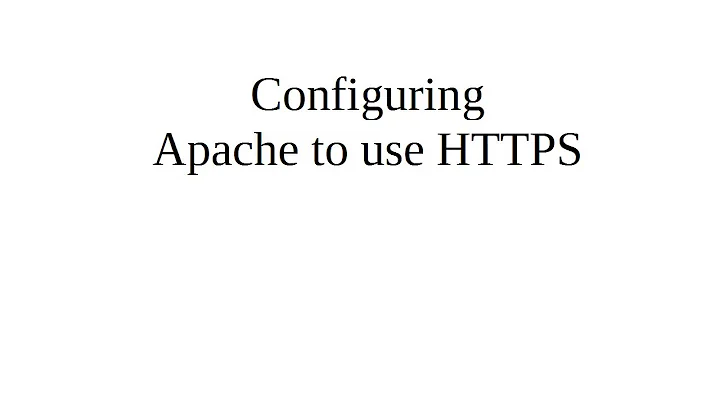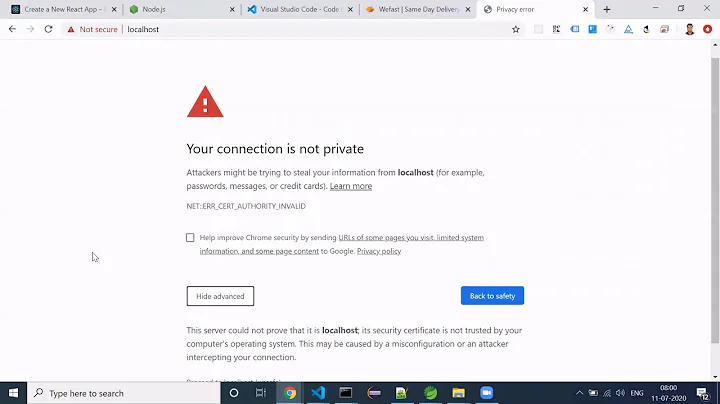Trouble configuring apache server to proxy an SSL connection
The error you're getting is probably due to the fact that your client (Firefox) is trying to use SSL, but you Apache virtual host does not have SSL enabled.
In order for your clients to be able to communicate via SSL with your front-end proxy, you're going to need to do SSL on the front-end, not in Tomcat. You gain absolutely nothing by using SSL between Apache and Tomcat.
In your <VirtualHost> block, you're going to need at least:
SSLEngine On
SSLCertificateFile ...
SSLCertificateKeyFile ...
Also, note htat SELinux has absolutely nothing to do with SSL, other than the fact that a misconfigured SELinux environment could prevent Apache from being able to read the necessary SSL certificates.
If you're not using Apache as anything other than a simple proxy and you're really not comfortable with Apache configuration you could in theory get rid of it and just have Tomcat listen on port 443 (by modifying the appropriate Connector block).
Related videos on Youtube
vivri
Updated on September 18, 2022Comments
-
vivri over 1 year
I'm running an application on Tomcat7 with Apache Portable Runtime, I bought an SSL certificate and configured it correctly - when I try to connect through the ip:port combination, it connects fine but warns me the certificate is issued to the domain name, not the IP.
The VPS I'm on doesn't have SELinux (and there's an issue installing), which is AFAIK required to have SSL be configured in apache, so I want to just route the requests to Tomcat, which does it on its end.
I configured apache to proxy the connections, first with port 80 that works perfectly:
NameVirtualHost www.mysite.com:80 <VirtualHost www.mysite.com:80> ProxyPreserveHost On ProxyRequests Off ServerName http://www.mysite.com ServerAlias http://www.mysite.com ProxyPass / http://localhost:8180/MYSITE/ ProxyPassReverse / http://localhost:8180/MYSITE/ ProxyPassReverseCookiePath /MYSITE/ / </VirtualHost>And then with the SSL port that doesn't want to work for some reason:
NameVirtualHost www.mysite.com:443 <VirtualHost www.mysite.com:443> SSLProxyEngine On ProxyPreserveHost On ProxyRequests Off ServerName https://www.mysite.com ServerAlias https://www.mysite.com ProxyPass / https://localhost:8443/MYSITE/ ProxyPassReverse / https://localhost:8443/MYSITE/ ProxyPassReverseCookiePath /MYSITE/ / CacheDisable * </VirtualHost>EDIT: I added the
RequestHeader set Front-End-Https "On"directive to the VirtualHost www.mysite.com:443, as per: http://www.gossamer-threads.com/lists/apache/users/396577
Here is the Tomcat APR Connector as configured in Tomcat's server.xml -
<Connector port="8443" maxHttpHeaderSize="16500" maxThreads="150" enableLookups="false" disableUploadTimeout="true" acceptCount="100" scheme="https" secure="true" SSLEnabled="true" SSLCertificateFile="x509-cert-path" SSLCertificateKeyFile="key-file-path" />There were no errors/warnings enabling the virtual hosts and restarting apache. When I try to https, this is what I see in FFox:
SSL received a record that exceeded the maximum permissible length. (Error code: ssl_error_rx_record_too_long)And in Chromium:
Error 107 (net::ERR_SSL_PROTOCOL_ERROR): SSL protocol error.Apache's error.log shows this warning message:
[warn] [client 216.58.38.90] proxy: no HTTP 0.9 request (with no host line) on incoming request and preserve host set forcing hostname to be www.mysite.com for uri /I've spent days trying to configure it, and would be very grateful if someone explained what's going on and how to fix it.
Many thanks. Victor.
-
vivri over 10 yearsThanks for your answer! I was under the impression the "RequestHeader set Front-End-Https "On"" directive instructed Apache to terminate SSL on the back end of the proxy.
-
user2751502 over 10 yearsThe
RequestHeaderdirective only modifies headers, it doesn't have any operational impact. -
vivri over 10 yearsI tried to https locally (wget localhost:8443/MYSITE), and it was refused because the cert was issued for www.mysite.com and not the local ip.. maybe that's the issue? In that case, I'll really have to configure SSL on Apache...
-
user2751502 over 10 yearsYou have to configure SSL in Apache in any case. In you current configuration Apache is speaking normal HTTP while your clients are trying to speak SSL.
-
vivri over 10 yearsI think someone figured it out w/o configuring apache - stackoverflow.com/questions/6764852/proxying-with-ssl, but it didn't work for me. Is it possible though?
-
user2751502 over 10 yearsThey're using SSL in Apache (
GNUTLSEnable On). It's simply NOT POSSIBLE to make this work without configuring SSL in Apache if you expect your clients to be speaking SSL.




